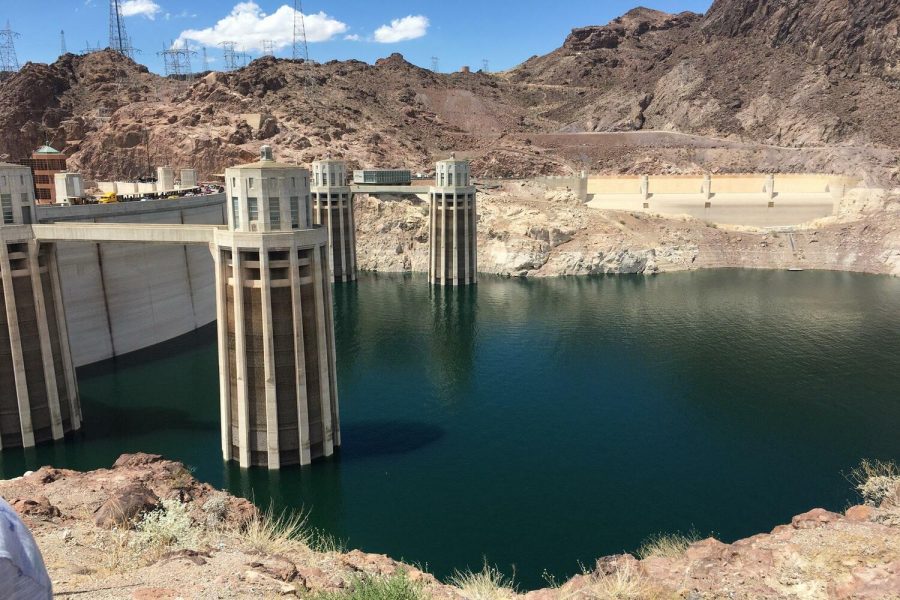California expects to head into its fourth year of drought after experiencing near-historic lows in reservoir storage across the state.
The California Department of Water Resources (DWR) recently announced that it expects to meet just 5% of water requests from contractors supplied by the State Water Project, many of which are in the Bay Area.
The project, a system of reservoirs, canals, and dams, operates as a significant part of California’s water system, serving 29 agencies that provide water for about 27 million residents.
The drought has similarly impacted the Central Valley Project, where California’s largest reservoir, Lake Shasta, is currently at 31% capacity, according to the Bureau of Reclamation.
“If drought conditions extend into 2023, Reclamation will find it increasingly difficult, if not impossible, to meet all the competing needs of the Central Valley Project without beginning the implementation of additional and more severe water conservation actions,” the agency said in a statement.
In California’s recorded history, six previous droughts have lasted at least four years, two of them in the past 35 years.
According to the DWR, the current drought from 2020 to 2022 is the driest three-year period since documentation began in 1896. Before our current drought broke its record, the record was set by the drought from 2013 to 2015.
California’s increasingly warmer and drier weather is expected to diminish the existing water supply by up to 10% by 2040. This warming climate means that a greater share of the rain and snowfall received will be absorbed by dry soils, consumed by thirsty plants, and evaporated into the air.
“Last year, about 90% of the State of California was in an extreme drought condition. There were a lot of curtailments of water supplies throughout the state. This year has been somewhat better regarding water levels in reservoirs. The rainfalls are a bit higher, and some operating processes have changed. But this coming year, there’s going to be a significant cutback in water coming from the Colorado River, which impacts much of Southern California,” said Kirk Wheeler, the president of the Mid-Peninsula Water District (MPWD) Board of Directors.
The recent Sierra storms have been a good start to the snow season and are arriving around the expected time in an average year, according to the DWR. However, last year’s conditions, when a record-wet December was followed by the driest January through March period on record, show that Californians should prepare for dry conditions despite early storms and should continue to keep conservation in mind.
Kat Wuelfing, the assistant general manager of the MPWD, emphasizes that being a resident of California now often means living in supply-constrained conditions.
“Our water supply reliability is something we always have to think about. And with more frequent and severe droughts, that’s very front of mind. It’s a challenge but also an opportunity to look for ways to find new supply sources,” Wuelfing said.
Agencies have utilized various methods of conserving water. One includes recycled water, used for non-drinking purposes such as irrigating landscapes. For further water recycling, potable water reuse treats water to an even high standard to purify it to bring it back into the drinking water system, according to Wuelfing.
“I want to see more of this direct and indirect potable reuse. It’s a great way to use technology to utilize a local water supply to everywhere people live,” Wuelfing said.
Still, if these drought conditions continue, some California residents may not only see water cuts but also impacts on the energy sector. The Central Valley Project, for instance, includes hydroelectric power plants that produce energy using water in large reservoirs like Lake Shasta. The United States Energy Information Administration (EIA) recently saw that California’s hydropower capacity decreased due to low water levels.
“The biggest issue is that the water allocations have been a little bit up in the air as far as certainty is concerned,” Wheeler said. “And so different communities are running into different levels of drought planning and effects. Residents in the MPWD are relatively protected because the San Francisco Public Utilities Commission has a fair amount of water in storage and has been able to supply most demands. But it’s requested that we have a conservation level, so we have made a concerted effort to request our users to conserve.”
Wheeler believes that California may go to mandatory conservation levels throughout the state, even for districts that do not have a severe shortfall.
“The next step for some districts is to reduce irrigation further sometime soon. Some districts in the state have a much larger problem than we do. Many agricultural users who depend on the State Water Project have zero water coming. They are essentially forced to go fallow, and it may be difficult to pump groundwater because there now is a program to allocate groundwater based on past water use and existing water rights,” Wheeler said.
Climate change has fundamentally altered the state’s hydrologic cycle – intensifying extreme weather and leading to longer, drier periods. As the world continues to warm, average conditions are no longer the expected outcome but the midpoint between extremes. According to the DWR, this shift further emphasizes that Californians cannot let their guard down when it comes to preparing for drought conditions and conserving.
“We’re living in an interesting time because we see the climate changing, but we don’t know exactly what the long-term effects will be,” Wuelfing said. “It’s certainly challenging, but simultaneously, it’s an exciting time to innovate and to get the momentum for new inventive projects.”






















